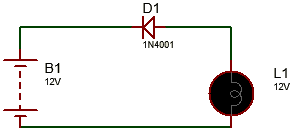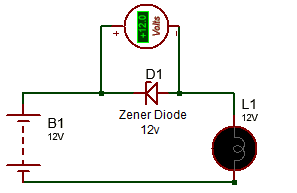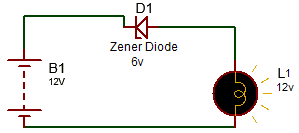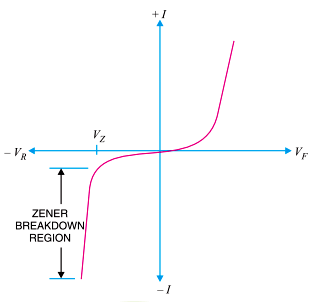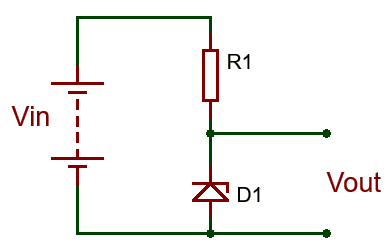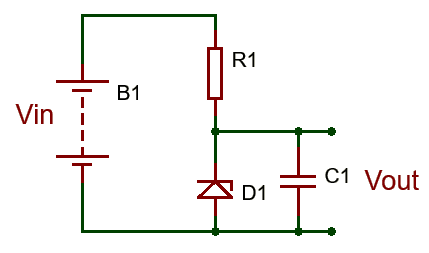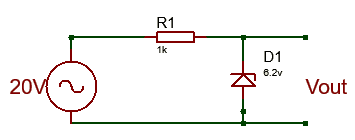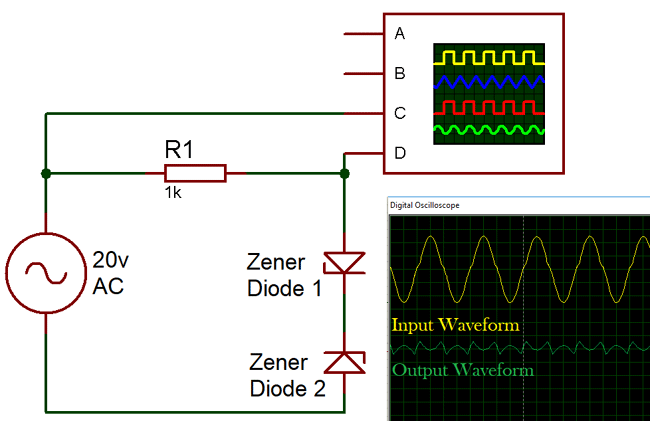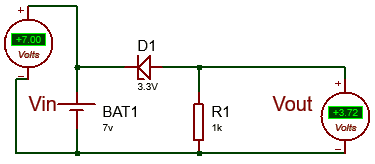We connect an unknown transformer to the network.
Nikolay Petrushov
How to deal with the windings of the transformer, how to properly connect it to the network and not "burn" and how to determine the maximum currents of secondary windings ???
Such and similar questions are asked to themselves by many novice radio amateurs.
In this article, I will try to answer similar questions and on the example of several transformers (photo at the beginning of the article), deal with each of them .. I hope this article will be useful to many radio amateurs.
To begin with, remember the common features for armored transformers
- The mains winding, as a rule, is wound first (closest to the core) and has the greatest active resistance (unless it is a step-up transformer or a transformer having anode windings).
- The mains winding can have bends, or consist for example of two parts with outlets.
- The serial connection of the windings (parts of the windings) in armored transformers is made as usual, beginning with the end or terminals 2 and 3 (if for example there are two windings with terminals 1-2 and 3-4).
- Parallel connection of windings (only for windings with the same number of turns), as usual start with the beginning of one winding, and end with the end of the other winding (n and k, or pins 1-3 and 2-4 - if for example there are identical windings with terminals 1-2 and 3-4).
General rules for connecting secondary windings for all types of transformers.
To obtain different output voltages and load currents for individual needs other than those available on the transformer, it is possible to obtain by various connections of the existing windings among themselves. Let's consider all possible variants.
- The windings can be connected in series, including windings wound around a different diameter wire, then the output voltage of such winding will be equal to the sum of the voltages of the connected windings (U = U1 + U2 ... + Un). The load current of such a winding will be equal to the lowest load current from the existing windings.
For example: there are two windings with voltages of 6 and 12 volts and 4 and 2 ampere load currents. As a result, we get a common winding with a voltage of 18 volts and a load current of 2 amperes.
- Windings can be connected in parallel,Only if they contain the same number of turns , including wound by a different diameter wire. The correctness of the connection is checked as follows. We connect the two wires together from the windings and measure the voltage on the remaining two wires.
If the voltage is doubled, the connection is not correct, in this case, change the ends of any of the windings.
If the voltage at the remaining ends is zero, or so (a difference of more than half a volt is not desirable, the windings in this case will bask on the XX), boldly connect the remaining ends together.
The total voltage of such a winding does not change, and the load current will be equal to the sum of the load currents, of all windings connected in parallel.
(I = I1 + I2 ... + In) .
For example: there are three windings with an output voltage of 24 volts and load currents of 1 ampere. As a result, we get a winding with a voltage of 24 volts and a load current of 3 amperes.
- The windings can be connected in parallel-series (for the parallel connection, see the point above). The total voltage and current will be the same as in a series connection.
For example: we have two in series and three parallel-connected windings (the examples described above). We connect these two composite windings in series. As a result, we get a common winding with a voltage of 42 volts (18 + 24) and a load current at the smallest winding, that is - 2 amperes.
- The windings can be connected in the opposite direction, including windings wound in different diameters (also parallel and series-connected windings). The total voltage of such a winding will be equal to the difference in voltages included in the opposite direction of the windings, the total current will be equal to the least current in the winding load. This connection is used when it is necessary to lower the output voltage of the existing winding. In the same way, to lower the output voltage of any winding, it is possible to overcoat all windings with an additional winding with a wire, preferably not less than the diameter of the winding whose voltage must be lowered, so that the load current does not decrease. The winding can be wound up without even examining the transformer, if there is a gap between the windings and the core , and turn it on against the required winding.
For example: we have two windings on the transformer, one 24 volt 3 amps, the second 18 volts 2 amps. We turn them on and we will end up with a winding with an output voltage of 6 volts (24-18) and a load current of 2 amperes.
But this is purely theoretical, in practice, the efficiency of such an inclusion will be lower than if the transformer had one secondary winding.
The point is that the current flowing through the windings creates in the EMF windings, and in a larger winding the voltage decreases with respect to the voltage XX, and in th e nshey - increases, and the greater the current flowing through the coils - the greater this effect.
As a result, the total rated voltage (at rated current) will be lower.
Let's start with a small transformer, adhering to the above features (left in the photo).
We examine it carefully. All his conclusions are numbered and the wires approach the following conclusions; 1, 2, 4, 6, 8, 9, 10, 12, 13, 22, 23, and 27.
Next, you need to call the ohmmeter with all the terminals to determine the number of windings and draw a transformer diagram.
The following picture is obtained.
Conclusions 1 and 2 - the resistance between them is 2.3 Ohms, 2 and 4 - 2.4 Ohm between them, between 1 and 4 - 4.7 Ohm (one winding with an average terminal).
Next 8 and 10 - resistance of 100.5 Ohm (one more winding). The conclusions of 12 and 13 are 26 Ohms (another winding). Conclusions 22 and 23 - 1.5 Ohm (the last winding).
Conclusions 6, 9 and 27 do not ring the other conclusions and among themselves - it's most likely the screen windings between the mains and other windings. These terminals are connected to each other in the finished structure and connected to the housing (common wire).
Once again, carefully inspect the transformer.
The network winding, as we know, shakes first, although there are exceptions.

It's hard to see in the photo, so I'll duplicate it. The lead from the core itself is soldered to terminal 8 (that is, it is closest to the core), then there is a wire to pin 10 - that is, the winding 8-10 is wound first (and has the highest active resistance) and is likely to be network.
Now, from the received data from the dial, it is possible to draw a diagram of the transformer.
It remains to try to connect the supposed primary winding of the transformer to the network of 220 volts and check the no-load current of the transformer.
To do this, we compile the following chain.
Consistently with the proposed primary winding of the transformer (we have 8-10 conclusions), we connect a conventional incandescent lamp with a power of 40-65 watts (for more powerful transformers 75-100 watts). The lamp in this case will play the role of a kind of fuse (current limiter) and protect the transformer winding from its failure when connected to the 220 volt network, if we chose the wrong winding or the winding is not rated for 220 volts. The maximum current flowing in this case along the winding (at a lamp power of 40 watts) will not exceed 180 milliamps. This will save you and the transformer under test from possible troubles.
-And in general, take yourself for a rule, if you are not sure of the correct choice of the network winding, its switching, in the installed jumpers of the winding, then the first connection to the network should always be made with a sequentially switched incandescent lamp.
By taking care, we connect the assembled circuit to the 220 volt network (I have a slightly higher voltage, or more precisely 230 volts).
What do we see? The incandescent lamp does not light.
This means that the network winding is selected correctly and further connection of the transformer can be made without a lamp.
We connect a transformer without a lamp and measure the no-load current of the transformer.
The idle current (XX) of the transformer is measured as follows; a similar circuit is assembled that we collected with a lamp (I will not draw any more), but instead of the lamp, an ammeter is switched on, which is intended for AC measurement (carefully inspect your device for this mode). The ammeter is first set to the maximum measurement limit, then, if it is large, the ammeter can be switched to a lower measuring limit. Being careful - we connect 220 volts to the mains, preferably through a separating transformer. If the transformer is powerful, then the probes of the ammeter must be short-circuited either by an additional switch or simply short-circuited with each other, since the starting current of the primary winding of the transformer exceeds the no-load current by 100-150 and the ammeter can fail. After,
The idle current of the transformer should ideally be 3-8% of the rated current of the transformer. It is also considered normal and current is 5-10% of the nominal. That is, if the transformer with a rated power of 100 watts, the current consumption of its primary winding will be 0.45 A, then the current XX should ideally be 22.5 mA (5% of the nominal value) and preferably not exceed 45 mA (10 % of the nominal).

As you can see, the no-load current is slightly more than 28 milliamperes, which is quite acceptable (well, it may be slightly overestimated), because this type of transformer is 40-50 watts in appearance. We measure the no-load voltage of the secondary windings. It turns out at conclusions 1-2-4 17.4 + 17.4 volts, the conclusions 12-13 = 27.4 volts, the conclusions 22-23 = 6.8 volts (this is at a voltage of 230 volts). Next, we need to determine the capabilities of the windings and their load currents. How it's done? If it is possible and allows the length of wires suitable for contacts, it is better to measure the diameters of the wires (roughly 0.1 mm - with a caliper and exactly a micrometer), and in the table HERE , with an average current density of 3-4 A / mm.kv. - we find currents that are capable of producing windings.If it is not possible to measure the diameters of the wires, we proceed as follows. We load each of the windings in turn with an active load, which can be anything, for example, incandescent lamps of different power and voltage (incandescent lamp with a power of 40 watts for 220 volts has an active resistance of 90-100 ohms in a cold state, a lamp with a power of 150 watts - 30 Ohm), wire resistors (resistors), nichrome spirals from electric tiles, rheostats, etc. We load until the voltage on the winding is reduced by 10% relative to the idling voltage. Then we measure the load current.

This current will be the maximum current that the winding will be able to produce for a long time without overheating.
Conditionally accepted value of voltage drop to 10% for constant (static) load in order not to overheat the transformer. You can easily take 15%, or even 20%, depending on the nature of the load. All these calculations are approximate. If the load is constant (glow of lamps, for example, the charger), then a smaller value is taken if the load is impulse (dynamic), for example, ULF (except for mode "A"), then we can take the value and more, up to 15-20%.
I take into account the static load, and I did it; winding 1-2-4 load current (when the winding voltage decreases by 10% relative to the idling voltage) - 0.85 amperes (power about 27 watts), winding 12-13 (pictured above) load current 0.19-0, 2 amperes (5 watts) and winding 22-23 - 0.5 amperes (3.25 watts). The rated power of the transformer is about 36 watts (rounded to 40). Yes, I also want to talk about the resistance of the primary winding.
For low-power transformers, it can be dozens, or even hundreds of ohms, and for high-power transformers it can be one ohm.
Very often the forum asks such questions;
"I measured the resistance of the primary winding TS250 with a multimeter, but it turned out to be 5 ohms.Is it too little for a 220 volt network, I'm afraid to include it in the network.
Since all multimeters measure DC resistance (resistance), you should not worry, because for an alternating current of 50 Hz, this winding will have a completely different resistance (inductive), which will depend on the inductance of the winding and the frequency of the alternating current.
If you have, than measure the inductance, then you yourself can calculate the resistance of the winding to alternating current (inductive resistance).
For example;
The inductance of the primary winding during the measurement was 6 GH, we go hereand enter these data (inductance 6 H, frequency of the current network 50 Hz), look - it turned out 1884.959 (round 1885), this will be the inductive resistance of this winding for a frequency of 50 Hz. From here you can calculate the idle current of this winding for 220 volts - 220/1885 = 0.116 A (116 milliampere), yes, you can add 5 ohms resistance, that is, it will be 1890.
Naturally, for a frequency of 400 Hz there will be quite a different resistance of this winding.

Similarly, other transformers are checked.
The photo of the second transformer shows that the leads are soldered to the contact lobes 1, 3, 4, 6, 7, 8, 10, 11, 12.
After the dullness, it becomes clear that the transformer has 4 windings.
The first one at terminals 1 and 6 (24 Ohm), the second 3-4 (83 Ohms), the third 7-8 (11.5 Ohms), the fourth 10-11-12 with the branch from the middle (0.1 + 0.1 Ohms) .
And it is clearly seen that the winding 1 and 6 is wound first (white terminals), then there is a winding 3-4 (black terminals).
24 Ohm active resistance of the primary winding is enough. For more powerful transformers, the active resistance of the winding reaches to units of Ohm.
The second winding 3-4 (83 Ohms), possibly boosting.
Here you can measure the diameters of the wires of all windings, except windings 3-4, the terminals of which are made of black, multi-strand, mounting wire.

Further we connect the transformer through the incandescent lamp. The lamp does not light, the transformer looks 100-120 in capacity, we measure the no-load current, it turns out 53 milliamperes, which is quite acceptable.
We measure the idling voltage of the windings. It turns out 3-4 - 233 volts, 7-8 - 79.5 volts, and the winding 10-11-12 at 3.4 volts (6.8 with an average output). We load the winding 3-4 before the voltage drop by 10% of the idling voltage, and measure the flowing current through the load.
The maximum load current of this winding, as can be seen from the photograph, is 0.24 amperes.
The currents of other windings are determined from the current density table, based on the diameter of the winding wire.
Winding 7-8 is wound by a wire 0,4 and a filamentary wire 1,08-1,1. Accordingly, the currents are 0.4-0.5 and 3.5-4.0 amperes. The nominal power of the transformer is about 100 watts.

There was one more transformer left. He has a contact strip with 14 contacts, top 1, 3, 5, 7, 9, 11, 13 and bottom are respectively even. It could switch to various network voltages (127,220,237) It is quite possible that the primary winding has several branches, or consists of two semi-windings with taps.
We are calling, and this is the picture:
Conclusions 1-2 = 2.5 Ohm; 2-3 = 15.5 Ohm (this is one winding with a tap); 4-5 = 16.4 Ohm; 5-6 = 2.7 Ohms (another winding with tap); 7-8 = 1.4 Ohm (3rd winding); 9-10 = 1.5 Ohm (4th winding), 11-12 = 5 Ohm (5th winding) and 13-14 (6th winding).
We connect to terminals 1 and 3 a network with a series-connected incandescent lamp.

The lamp burns in half the heat. We measure the voltage at the terminals of the transformer, it is equal to 131 volts.
It means that the primary winding here consists of two parts, and the connected part at 131 volts voltage starts to go into saturation (the no-load current rises) and the lamp thread is then heated up.
We connect jumper terminals 3 and 4, that is, consistently two windings and connect the network (with a lamp) to terminals 1 and 6.
Hurray, the lamp does not burn. We measure the no-load current.

The no-load current is 34.5 milliamps. Here, most likely (since part of winding 2-3 and part of the second winding 4-5 have more resistance, these parts are designed for 110 volts, and parts of windings 1-2 and 5-6 for 17 volts, that is common for one part of 1278 volts), 220 volts was connected to terminals 2 and 5 with a jumper on terminals 3 and 4 or vice versa. But you can leave and the way we connected, that is, all the parts of the windings consistently. For a transformer, this is only better.
Everything, the network is found, the further actions are similar to those described above.
A little more about the rod transformers. For example, there is such a (photo above). What are the common features for them?
- In rod transformers, as a rule, two symmetrical coils, and the network winding is divided into two coils, that is, one coil wound coils of 110 (127) volts, and the other. The numbering of the outputs of one coil is the same as the other, the numbers on the other coil are marked (or conditionally marked) with a stroke, i.e. 1 ', 2', and so on.
- The mains winding, as a rule, is wound first (closest to the core).
- The mains winding can have bends, or consist of two parts (for example one winding - pins 1-2-3, or two parts - pins 1-2 and 3-4).
In the core transformer, the magnetic flux moves along the core (along the "circle, ellipse"), and the direction of the magnetic flux of one rod will be opposite to the other, so to connect the two halves of the windings in series, on different coils connect the same-name contacts or the beginning with the beginning (end with end ), i.e. 1 and 1 ', the network is fed to 2-2', or 2 and 2 ', the network is then fed to 1 and 1'.
- For the series connection of windings consisting of two parts on one coil, the windings are connected as usual, the beginning with the end or the end with the beginning, (nc or k-n), that is, terminals 2 and 3 (if, for example, there are 2 windings with pin numbers 1-2 and 3-4), as well as on the other coil. Further serial connection of the resulting two semi-windings on different coils, see the point above. (An example of such a connection on the transformer circuit is TC-40-1 ). - For parallel connection of windings ( only for windings with the same number of turns) on one coil, the connection is made as usual (n and k, or leads 1-3 and 2-4 - if for example there are identical windings with leads 1-2 and 3-4). For different coils, the connection is made as follows, k-n-tap and n-k-tap, or connect leads 1-2 'and 2-1' - if for example there are identical windings with leads 1-2 and 1'-2 ' .
I remind you once again of the safety precautions, and it is best for experiments with a voltage of 220 volts to have a separating transformer at home (a transformer with 220/220 volt coils for galvanic isolation with an industrial network), which will protect against electric shock, by accidentally touching the bare end of the wire .
If you have any questions about the article, or find a transformer in the zagashniki (with suspicion that he is a power), ask questions HERE , we'll help you figure out with his windings and connection to the network.






